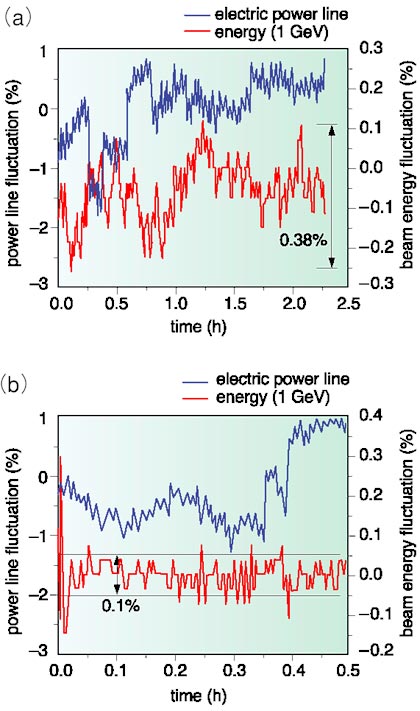In particle accelerators, it is necessary to keep the energy of the accelerated beams to a predetermined value over a long period of time, when they are in operation. This characteristic has been strongly requested for the high intensity proton accelerators, the construction of which has just been started. This is not only because the accelerator will be operated continuously for a very long time, but also because the planned beam power is so high that a small amount of beam spill would cause a severe contamination with radioactivity. The beam spill could take place with an energy fluctuation of the beam.
Although the particles accelerated are not protons but electrons, detailed studies have been carried out on the energy fluctuation and its causes with a large-scale liner accelerator (SPring-8 linac). The factors studied affecting the accelerated particle energies are the voltage fluctuation of the electric power line, the temperature variations of the room and the cooling water. The process whereby these factors affecting the energy fluctuation are related to one another, is so complicated that the studies have been performed by a statistical method. Other factors affecting the energy fluctuation had also been taken into account by including these effects as white noise.
Experiments have been performed to suppress the energy fluctuation of the beam using a control system, which is shown in Fig. 5-1. Before operating the control system, the fluctuation of the energy was observed to reach as large a value as 0.38% as shown in Fig. 5-2(a). Whereas after the correction was applied (by varying the phase of the accelerating radio frequency), it was reduced to appreciably less than 0.1% as in Fig. 5-2(b), demonstrating the effectiveness of the present method. At present, studies are ongoing to include explicitly other factors influencing the energy, and also to apply the present method to the high intensity proton accelerators under construction. |


